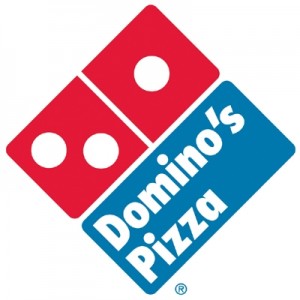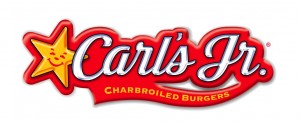what not to do
You know that feeling you get when watching that show, What Not to Wear? Cringing and squirming, you watch as delusional people show off some of the most hideous outfits – they think they actually look good when it is so clear they don’t. That they would be so self-unaware is unbelievable.
Well, that’s how I’ve felt as I’ve witnessed the recent campaigns by two fast food restaurant chains. They may think they’re rockin’ a good thing, but they’re not – and I’m incredulous that they don’t see it.

First up, we have Domino’s. They recently changed their pizza recipe and launched an aggressive ad and PR campaign to promote it. The “Pizza Turnaround” effort includes a video on the chain’s website in which company president, Patrick Doyle explains that “There comes a time, when you have to make a change.” The video cuts to footage from focus groups which the company conducted, featuring customers ragging on the chain’s pizza. Then a host of Domino’s employees recount all the negative feedback they’ve gotten about their products through the years – cardboard crust, ketchup-like sauce, etc.
In the news media and blogosphere, much of the response to the campaign has been surprise and wonder – that Domino’s would be willing to proclaim “we suck” seems pretty bold. But that’s not what’s so unbelievable to me.
By declaring how bad their pizza has been, Domino’s is essentially saying to its customers “you suck.” They’re telling us folks who have been buying over 2MM Domino’s pizzas every year that we have bad taste – and we’re made to feel like idiots for having bought the stuff and actually thinking it tasted decent.
This violates one of the primary rules of brand communications I learned early on in my career. That is, always make your customers feel like heroes. Your communications should never insult your customers or show them using your product in humiliating or otherwise demoralizing circumstances. Instead, you should help them feel good about themselves, showing how your product helps them be better people.
I’ve seen many violations of this rule – in an attempt to be funny or memorable, ads often rely on portraying their customers in ridiculous situations. And I cringe every time I see such foolish efforts. But Domino’s approach stands out as particularly misguided.
You see, clearly the chain is making a good move. The campaign video explains that Domino’s is trying to be responsive to customers and give us what we want. I give Domino’s props for not only listening to customer feedback but also being willing to change as a result of it. And after the crisis the chain underwent earlier this year when a couple of rogue employees posted a disgusting video on YouTube, Brandweek featured an op-ed of mine encouraging the chain to seize the moment to improve their product quality.
I explained: “The brand has always been more about deals and price than about good food and quality—maybe this crisis presents the perfect opportunity for the chain to upgrade the quality of its ingredients and/or cooking procedures. This would give customers a tangible reason to trust the chain and it would shift their perceptions of the brand to a more positive position than before.”
So the change itself is spot-on – but their promotional approach does the brand a disservice by making their customers feel like losers. Surely they could have taken a more nuanced tact. I wonder if What Not to Wear’s Clinton Kelly has any some makeover advice for Domino’s ad campaign?!
The other QSR brand that has prompted a tongue-clucking “What were they thinking?” is Carl’s Jr. To promote the launch of their new line of new grilled chicken entrée salads, the chain developed a campaign featuring Kim Kardashian.
The TV spot takes the concept of subliminal advertising to new heights as Ms. Kardashian, clad in sexy lingerie and lounging in bed, talks about “getting dirty” while salad dressing drips off a piece of fruit in a way that would make adult-film directors and their viewers salivate. The spot seems the latest in a long line of super-sexy campaigns that have featured Paris Hilton giving what can only be described as an unusual car wash and Audrina Partridge eating a juicy burger while wearing a bikini that showed off her equally juicy body.
These past campaigns have been tacky, offensive, alienating to women – and absolutely brilliant. They’ve done an extraordinary job at standing out and forming a tight bond with the young males they’re targeted to — and so, one could argue, the chain can’t be faulted for continuing on its roll with this latest effort.
But, here’s the thing. Carl’s Jr. spokespeople explain that it is a program “specifically geared to our women customers.” They say, “This product is a perfect fit for Kim and her image as she’s recently shifted her lifestyle to focus on fitness and health, though she doesn’t want to sacrifice indulgence and taste in her diet.”
So what we have here is a case of a confused identity. If the chain is trying to appeal to women with its new salad line (which seems to make sense because how many men would choose cranberries and apples over beef and bacon at a fast food restaurant, really), then why run an ad so filled with sexual innuendos it’s surprising to see it aired during prime time?
The spot may generate buzz and Kardashian fans of both genders are likely to respond to it, but the overly sexual theme of the ad prevents the brand from resonating emotionally with women. And I question whether that’s really what Carl’s should be trying to do.
As a regional brand with an ad budget that’s much smaller than others, Carl’s needs to focus. When the folks at QSRWeb asked me what I thought of the spot, I called it a “schizophrenic brand move.” Generally speaking, if a QSR has maxed out its share in its target market, then perhaps it makes sense to pursue additional segments as secondary targets. But for most, such an approach dilutes the strength of the brand.
In a recent blogpost, What Not to Wear’s Stacy London is quoted as saying, “When someone is dressing in a way that’s either inappropriate or a caricature, it’s almost like [they’re saying], ‘Don’t look at me, just look at what I’m wearing.’” It seems this latest effort from Carl’s Jr. is also an attempt at distraction – one that is neither wise nor working.
Both Domino’s and Carl’s Jr. serve as object lessons in what not to do when it comes to brand communications. Both chains have made smart menu moves — the products launched in both of these initiatives sound really good. My mouth is watering as I think about a cheesy, saucy, meaty Domino’s pizza – and the Cranberry, Apple, Walnut Grilled Chicken Salad is definitely on my list of must-tries at Carl’s. But their ad campaigns leave something to be desired – and learned.
related posts: